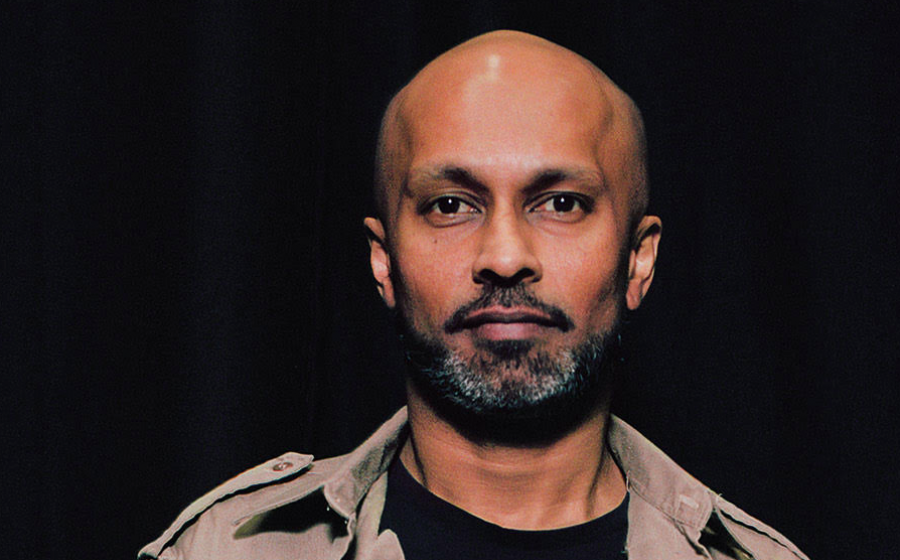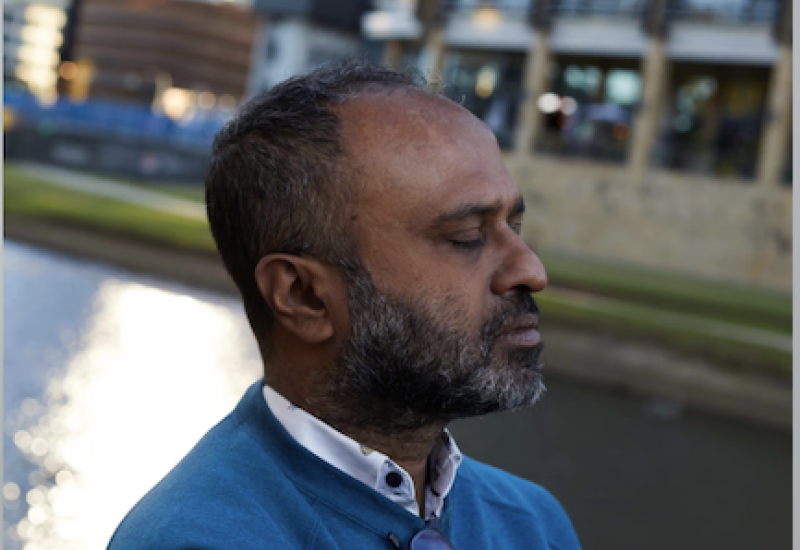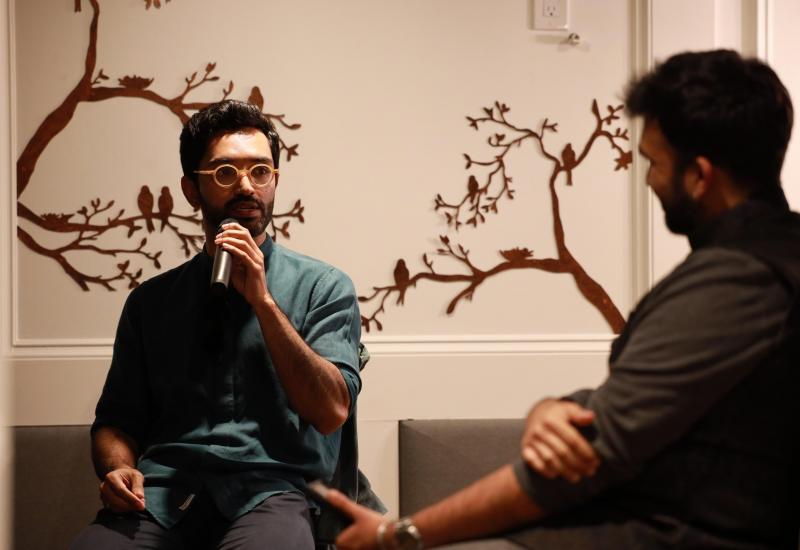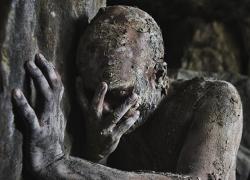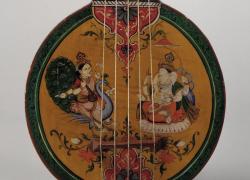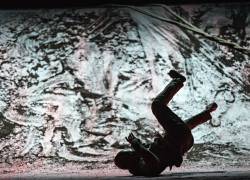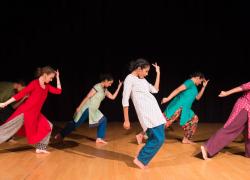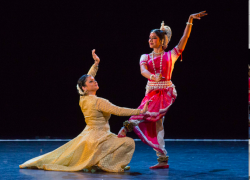Akram Khan- On Curating Darbar Festival
Akram Khan talks to Parbati Chaudhury, kathak artist, about curating the dance programme of the Darbar Festival.
Q. Off the back of last year’s Darbar, what vision did you set out with this year?
Akram: ‘Well, last year was an experiment really, and it was quite…full…of many elements. On reflection, I wanted to streamline it more with Sandeep (Virdee, Artistic Director of Darbar), and focus more on the dance part, and somehow separate it from the music, meaning the people who want to watch the music, get to watch that specifically, and then there’s the dance programme. That’s really been the main step.’
‘Apart from that, I would say that I’m moving in numbers: last year was about solos; this year about duets; next year will be about groups.’
Q. All of this year's performing artists are based in India. Will there room for UK or Europe-based artists next year?
‘I don’t know. I haven’t really thought about it. It depends. I’m always looking for artists but I don’t want to just take them because they’re from a particular country. I want to take people because I really believe in them. That’s really important for me.
I want to include, especially in the Lilian Baylis, younger artists who are trained here, and give them exposure. That’s more important than anything really. Last year, we did that a little bit (referring to Seeta Patel’s Something Then Something Now) but next year I want to explore representing young voices without the pressure of putting them on the main stage.’
Q. Since you mentioned the main stage, although it is a tremendous platform, do you feel that it is suitable for solo work considering the nature of abhinaya which can involve either highly stylised or subtle facial expressions that can be key in conveying not just narrative, but intention too?
‘Scale is down to the artist. It’s who’s performing. You could be in a huge temple in India where the performer is doing extremely intricate stuff, and you’re going to miss it. Whether it’s relevant or important on the main stage, yes it is.’
‘As I get older, even if subtleties are missed, outside of how it looks, it’s what’s happening inside, what you’re feeling from the energy, the spirit.
It depends on what you’re considering abhinaya. Xenos, Desh, Zero Degrees all have abhinaya, which are all contemporary works. Some people will miss it: people sitting in the first or second circle will miss the subtleties but just for that reason, I wouldn’t take it away from the main stage.’
‘What’s really exciting for us this year, following on from last year, is the scenography designed by Aideen Malone, our previous lighting designer – a collaboration between the both of us.’
‘We are going to use that as the theme for every Darbar. Aideen and I liked it so much so we decided that it’s not going anywhere. It will be the signature of the festival so that every artist is coming into this particular set up.’
Q. What were the last two or three Indian classical dance performances that you watched of any scale live?
‘It was probably the last Darbar. And if you ask me again next year, I’ll probably say this year’s Darbar.’‘My dream is to hang out with Mavin in the South of India when all the festivals are happening. He promised that he will take me. I do want to be on the other side.’
Q. Some of the publicity feeds partly into the exotification of Indian classical dance (names of the programmes). Do UK audiences still need to be convinced in this way?
‘As the curator, I choose the work, but the aesthetic vision of the artists is not necessarily my call. With my work, every single detail goes through me.
I don’t necessarily see it as a problem but I guess it depends on your perspective, whether you’re approaching the festival from a more Western or more Eastern viewpoint.’ I had an argument similar to this with Pina Bausch about ten years ago. She wanted to programme me for a festival that she was curating but was exotifying everything around that day. It was unacceptable.’
Q. On that note, can you tell us more about each evening of performance?
‘The first couple who are performing - the husband-wife duo - Renjith Babu and Vijna Vasudevan – unfortunately, the wife can no longer make it, so another wonderful dancer is stepping in - Neha Mondal Chakrvarty - and they will be performing a piece exploring creation and destruction, the paired forces of Shiva and Kali. This has been choreographed by Mavin Khoo, who I must mention for another reason, as he works very closely with me in everything that I do now. Ruth Little is probably my closest collaborator, but so is Mavin because of his extensive knowledge in this field.
The second evening is also very special: a master of odissi - Sujata Mohapatra - and a younger person in terms of her career too - Gauri Diwaker - a real firecracker and probably the most senior student of Aditi Mangaldas, who I love. They will each be performing solos and then be coming together for a duet.
I really hope that the younger generation learning Indian classical dance come along to watch. Their turnout was disappointing last year. There were young audience members, but more from a contemporary dance background. Sadler’s Wells is a beacon for all dance, and Indian classical dance is firmly a part of that.’
Q. On a completely different matter, but something that is beginning to send shockwaves through the Indian classical dance world, what needs to happen regards the individuals who are slowly being named as alleged perpetrators of sexual abuse?
‘I am aware of what has been happening in the Indian classical music scene, but didn’t realise that the same is taking place in the dance world. No artist, guru or not, has any right to abuse anybody just because they are less powerful than you. That is intolerable.’
I mention how such individuals have hidden behind their status and have been protected by circles of enablers. Denial and sweeping things under the rug have also become normalised.
‘It is absolutely the art community that has protected them, but it’s in every walk of life.
I was about to come out to speak on this matter about 15 years ago as I had heard stories, but I was prevented from doing so. I already felt cut off from the kathak world but in hindsight, the fact that I didn’t say anything is also a part of it. When my daughter was born, I gained more courage in speaking out.’
Pulse would like to thank Akram Khan for taking out the time from a busy schedule to talk to our reporter.

